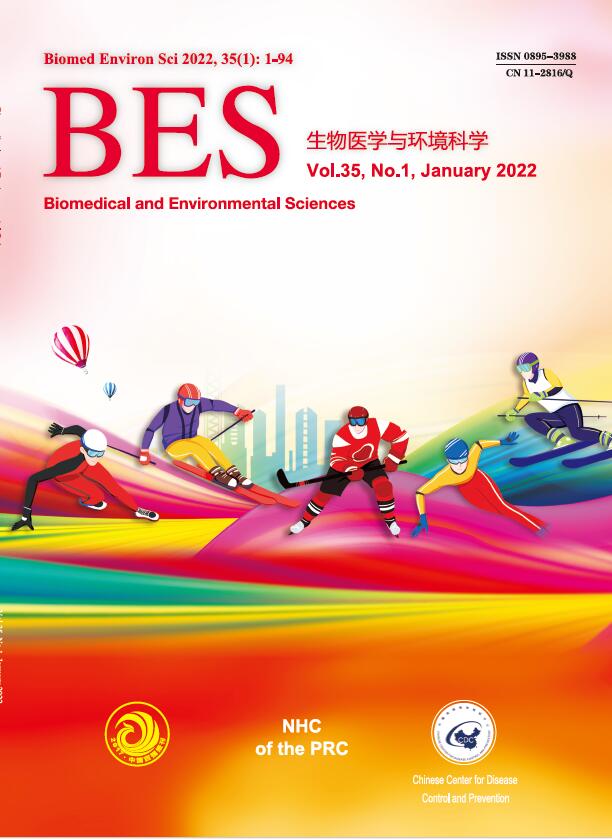-
Guiding Institution:
Bureau for Diseases Prevention and Control of the National Health Commission
Leading Institutions:
Chinese Center for Disease Control and Prevention
China Institute of Sport Science
Participating Institutions: (sequence following Chinese Pinyin)
School of Public Health, Peking University
Institute of Sports Medicine of Peking University
School of Sport Science, Beijing Sport University
School of Sport Medicine and Rehabilitation, Beijing Sport University
China Institute of Sport Science
National Institute of Sports Medicine
School of Medicine, Jinan University
Jiangsu Province Geriatric Hospital
Shenzhen Nanshan Center for Chronic Disease Control
Beijing Tiantan Hospital, Capital Medical University
Shanghai JS Life Sciences Institute
Chinese Center for Disease Control and Prevention
National Institute of Environmental Health, China CDC
National Center for Chronic and Noncommunicable Disease Control and
Prevention, China CDC
National Institute for Nutrition and Health, China CDC
The First Affiliated Hospital, Sun Yat-sen University
Secretariat: Shanghai JS Life Sciences Institute
Steering Committee:
CHEN Jun Shi, Academician, Chinese Academy of Engineering; Director, Shanghai JS Life Sciences Institute
CHANG Ji Le, Director, Bureau for Diseases Prevention and Control of the National Health Commission
WU Liang You, Deputy Director, Bureau for Diseases Prevention and Control of the National Health Commission
FENG Lian Shi, Former Director, China Institute of Sport Science; Director, Social Sports Guidance Center, General Administration of Sport of China
LIANG Xiao Feng, Former Deputy Director, Chinese Center for Disease Control and Prevention; Chair Professor, Jinan University
ZHANG Xia, Deputy Director, National Institute of Sports Medicine
Composing and Editorial Board:
Chief ZHAO Wen Hua, National Institute for Nutrition and Health, China CDC
LI Ke Ji, School of Public Health, Peking University
Deputy Chiefs (sequence following Chinese strokes)
WANG Yu Ying, National Institute for Nutrition and Health, China CDC
WANG Jing Zhong, National Institute for Nutrition and Health, China CDC
LIU Ai Ling, National Institute for Nutrition and Health, China CDC
CHEN Xiao Rong, National Center for Chronic and Noncommunicable Disease
Control and Prevention, China CDC
XU Jian Fang, China Institute of Sport Science
YANG Peng, Shanghai JS Life Sciences Institute
Members (sequence following Chinese strokes)
DING Cai Cui, National Institute for Nutrition and Health, China CDC
WANG Mei, China Institute of Sport Science
WANG Lei, Jiangsu Province Geriatric Hospital
WANG Hui, The Former ILSI Focal Point in China
WANG Zhuo Qun, National Center for Chronic and Noncommunicable Disease
Control and Prevention, China CDC
LIU Dan, School of Medicine, Jinan University
LIU Kai Qi, Chinese Center for Disease Control and Prevention
LI Liu Bai, School of Public Health, Peking University
QIU Jun Qiang, School of Sport Science, Beijing Sport University
ZHANG Ti, Shenzhen Nanshan Center for Chronic Disease Control
ZHANG Pei Zhen, School of Sport Medicine and Rehabilitation, Beijing
Sport University
YANG Xiao Guang, National Institute for Nutrition and Health, China CDC
YANG Xi, Chinese Center for Disease Control and Prevention
YANG Zheng Xiong, National Institute of Environmental Health, China CDC
JIANG Yong, Beijing Tiantan Hospital, Capital Medical University
LIANG Qi, The First Affiliated Hospital, Sun Yat-sen University
ZHAI Yi, Beijing Tiantan Hospital, Capital Medical University
CHANG Cui Qing, Institute of Sports Medicine of Peking University
Secretaries YANG Peng, Shanghai JS Life Sciences Institute
HOU Wan Jing, Shanghai JS Life Sciences Institute
1. General Guidelines
Moving is good, the more the better, do not overdo things, and keep at it.
Less sedentary behaviors, and stay physically active on a daily basis.
Meet the recommended level of physical activity.
Engage in physical activity safely.
2. Guidelines for Children Aged 2 Years and Younger
Engage in various forms of interactive activities with caregivers every day.
Children who can walk independently should be physically active for at least 180 minutes per day.
Restrained time should not exceed one hour at a time.
Screen watching is not recommended.
3. Guidelines for Children Aged 3–5 Years
Engage in at least 180 minutes of physical activity per day, including 60 minutes of energetic play, and encourage outdoor activity.
Sedentary behaviors should not exceed one hour each time.
Screen time should be less than one hour per day.
4. Guidelines for Children and Adolescents Aged 6–17 Years
Engage in at least 60 minutes of moderate-to-vigorous physical activity every day; outdoor activities are primarily encouraged.
Engage in muscle strengthening and bone strengthening exercises at least three days a week.
Reduce sedentary behaviors. Sedentary behavior should not exceed one hour each time. Screen time should be less than two hours per day.
5. Guidelines for Adults Aged 18–64 Years
Engage in 150–300 minutes of moderate-intensity or 75–150 minutes of vigorous-intensity aerobic activity per week, or an equivalent combination of moderate-intensity and vigorous-intensity aerobic activity.
Engage in muscle-strengthening exercise at least two days a week.
Maintain daily physical activity and increase the physical activity level.
6. Guidelines for Older Adults aged 65 Years and Older
Guidelines for adults also apply to older people.
Persist in perform balance, agility, and flexibility exercises.
In cases unable to engage in 150 minutes of moderate-intensity physical activity per week, increase the level of various physical activities as much as possible.
7. Guidelines for Individual with Chronic Diseases
Individuals with chronic diseases should consult with their doctors before engaging in physical activity and conduct physical activity under professional guidance.
If body conditions allow, individuals should refer to their age group guidelines.
If body conditions do not allow, individuals are encouraged to conduct regular physical activities based on their actual conditions.
Physical Activity Guidelines for Chinese (2021)
doi: 10.3967/bes2022.001
| Citation: | Composing and Editorial Board of Physical Activity Guidelines for Chinese. Physical Activity Guidelines for Chinese (2021)[J]. Biomedical and Environmental Sciences, 2022, 35(1): 1-3. doi: 10.3967/bes2022.001 |







 Quick Links
Quick Links
 DownLoad:
DownLoad: